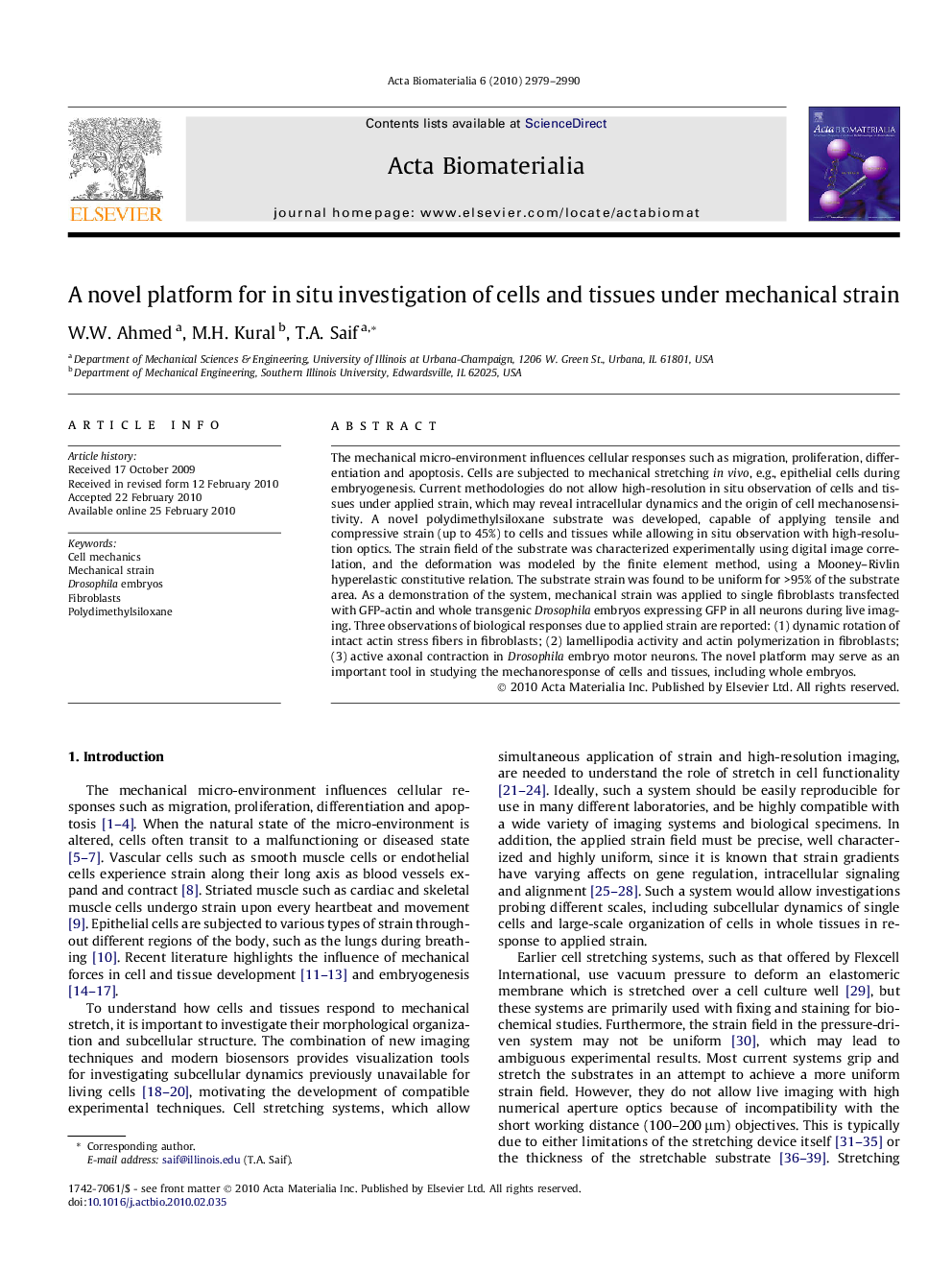| Article ID | Journal | Published Year | Pages | File Type |
|---|---|---|---|---|
| 2259 | Acta Biomaterialia | 2010 | 12 Pages |
The mechanical micro-environment influences cellular responses such as migration, proliferation, differentiation and apoptosis. Cells are subjected to mechanical stretching in vivo, e.g., epithelial cells during embryogenesis. Current methodologies do not allow high-resolution in situ observation of cells and tissues under applied strain, which may reveal intracellular dynamics and the origin of cell mechanosensitivity. A novel polydimethylsiloxane substrate was developed, capable of applying tensile and compressive strain (up to 45%) to cells and tissues while allowing in situ observation with high-resolution optics. The strain field of the substrate was characterized experimentally using digital image correlation, and the deformation was modeled by the finite element method, using a Mooney–Rivlin hyperelastic constitutive relation. The substrate strain was found to be uniform for >95% of the substrate area. As a demonstration of the system, mechanical strain was applied to single fibroblasts transfected with GFP-actin and whole transgenic Drosophila embryos expressing GFP in all neurons during live imaging. Three observations of biological responses due to applied strain are reported: (1) dynamic rotation of intact actin stress fibers in fibroblasts; (2) lamellipodia activity and actin polymerization in fibroblasts; (3) active axonal contraction in Drosophila embryo motor neurons. The novel platform may serve as an important tool in studying the mechanoresponse of cells and tissues, including whole embryos.
